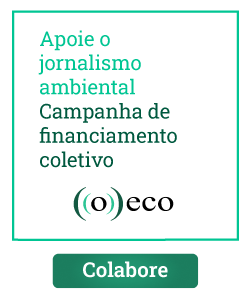By Jennifer Mitchell, Director of Strategic Initiatives, Global Footprint Network and Mathis Wackernagel, Ph.d., President, Global Footprint Network A few weeks ago, WWF, Global Footprint Network and the Zoological Society of London issued a comprehensive report on the health of the planet. The 2010 edition of the Living Planet Report (available here in Portuguese) shows human demand on resources outstripping sustainable levels at an alarming rate. The report shows Brazil leads the world in ecological wealth. But can it protect its greatest asset? According to Global Footprint Network’s latest figures, Brazil is the country with the most total biocapacity, a measure of the amount of resources its ecosystems produce. Some 14 percent of the world’s total biocapacity can be found within the Brazil’s borders, and the biocapacity available per person (9 global hectares) is more than four times the world average (1.8 gha). Brazil is also one of the countries with the greatest positive balances between its biocapacity and its Ecological Footprint, which measures the resources a population demands to produce what it consumes and absorb its CO2 emissions. The value of Brazil’s natural capital becomes especially clear given the global context. In 2007, the most recent year for which data are available, humanity’s total Ecological Footprint exceeded by 50 percent what nature can sustain, according to the Living Planet Report. Put another way, it now takes 18 months for nature to regenerate the resources consumed and absorb the CO2 emissions generated by a year of human activities. To understand how such ecological overspending is possible, it is helpful to use a financial analogy. When humanity’s Ecological Footprint is lower than biocapacity, it is as though we are living off of the interest from nature. Once we go beyond that, we begin depleting our stocks of ecological resources and accumulating waste — essentially drawing down our principal. Just as with financial assets, this can go on for a period of time. But the urgent problems we face today, from climate change to the plummeting biodiversity detailed in the Living Planet Report, are signs we have reached the limits of our overspending. In a world facing a growing resource crunch, Brazil’s biocapacity offers it a significant advantage — both its in ability to be a supplier to other countries and to provide well for its own citizens. But there is a catch. Brazil can only realize these benefits if doesn’t deplete the source of its wealth — if it manages, in essence, to live off its interest. Trends show the country is currently headed in the opposite direction. At 2.9 global hectares, the Ecological Footprint of the average Brazilian is already larger than the global average, and considerably greater than the 1.8 available per person on the planet. (Click here to explore how Brazil’s Footprint compares to that of other countries.) “The reduction of inequality with increased purchasing power of the Brazilian population is a positive achievement,” Secretary General of WWF-Brazil Denise Hamú said in response to the report. “However, we also have to face a major challenge: to grow without depleting our natural resources.” Brazil’s growing population presents another challenge. The country’s population has more than doubled since 1961, from 75 million to 190 million, while total biocapacity has not changed significantly. The result is that the amount of biocapacity available per person, while large, is now less than half of what it was four decades ago. The good news is that, as the quality of life in Brazil has improved, the per capita Ecological Footprint has not risen at the exponential rate that it has in other countries – – in particular those of Europe, North America and the Middle East. The country has a relatively low Footprint for its level of human development as measured by the UN Human Development Index, which rates countries based on attainment of factors such as longevity, educational attainment and income. This suggests that it is developing with a lower level of resource-demand than some other countries. Brazil’s challenge is to create new growth opportunities for the country while protecting the ecosystem services that are the foundation for its economic development. If it can keep a balance between what is consumed and what nature can provide, it will be the rising star of the 21st century. If not — well, it’s important to remember that, unless one takes care to protect one’s assets, even the richest among us can end up broke.
Leia também

Reportagem sobre compostagem é a grande vencedora do Prêmio Sebrae de Jornalismo 2025
Matéria de Elizabeth Oliveira, em ((o))eco, ganhou a categoria nacional texto. Premiação ocorreu em cerimônia realizada nesta quinta-feira (4) →

Conama incorpora justiça climática e combate ao racismo ambiental em nova diretriz
Resolução inédita reconhece desigualdades ambientais e cria diretrizes para políticas mais justas; Princípios foram aprovados durante 148ª reunião do colegiado →

Plataforma reúne dados da cadeia da restauração para alavancar agenda no país
A Vitrine da Restauração ajuda a conectar fornecedores de insumos e serviços, viveiros, pesquisadores e políticas públicas para acelerar iniciativas de recuperação da vegetação →




